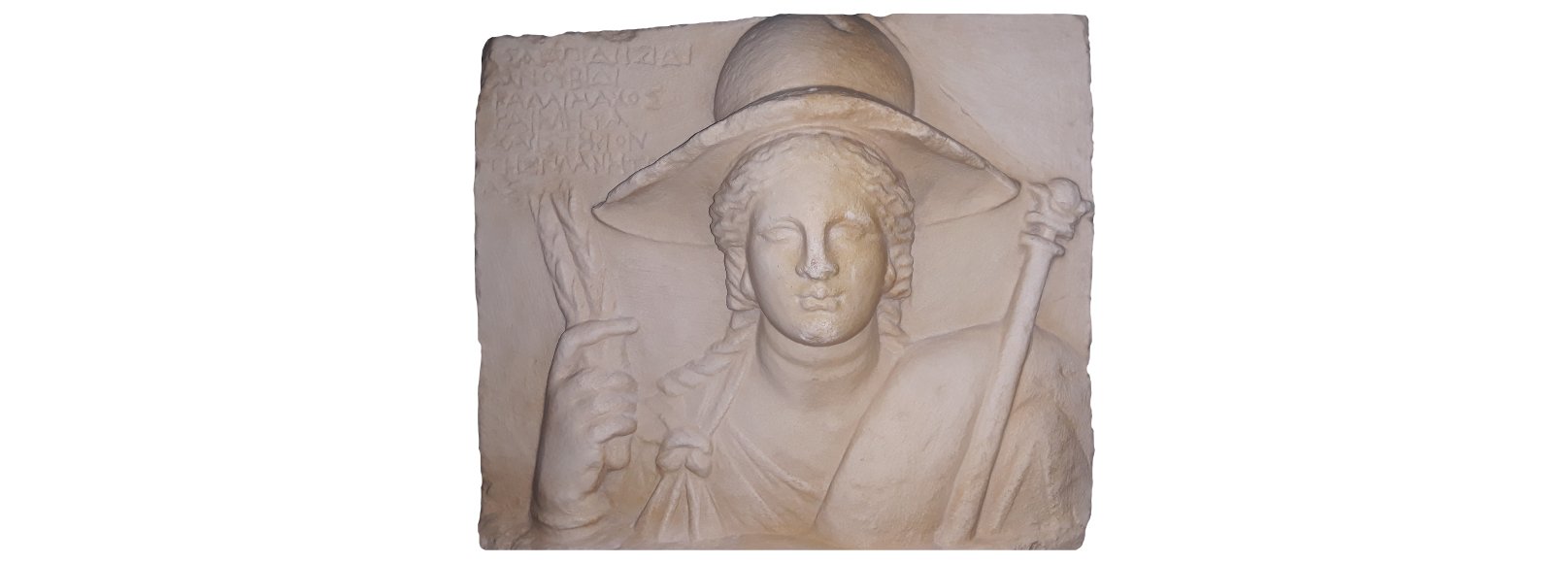Goddess Isis
Inscribed plaque depicting the goddess Isis
2nd century BC from Dion, Located in the Archaeological Museum of Dion.
Isis is one of the major goddesses of ancient Egypt. She has gained her great fame during the Hellenistic period (323-30BC) and her worship spread throughout the Roman Empire. Isis was identified with many deities of Greek mythology and especially with the goddess Demeter. She was considered the personification of the earth and protectress of sailors. Her marital and motherly affection, along with the power of her witchcraft art, made her one of the most beloved deities for the Egyptian people.
According to the legend as narrated by Plutarch, Isis was Osiris’s sister and wife. Osiris became the king of Egypt and was engaged in improving the lives of the Egyptian and promoting culture during his reign. Isis ascended with him on the throne helped him in his civilizing work and offered important goods to the people. She taught the milling of wheat, the preparation of bread, spinning flax and treating diseases. She instituted marriage and family. Isis took a leading role after her husband was murdered, by his brother Seth. She found and joined her dead husband’s body parts. She was the main mourner, at her husband’s funeral and with the form of a bird, flapped her wings over his corpse and she gave him life. Osiris came back to life and became king of the dead and judge of the underworld. According to tradition Isis protected her son Horus from Seth, the murderer of his father, who wanted to occupy the throne. When Horus came of age, he assumed the kingship of Egypt and with the assistance, the cunning and magical capacity of Isis, defeated and killed his uncle, taking revenge for the death of his father.


